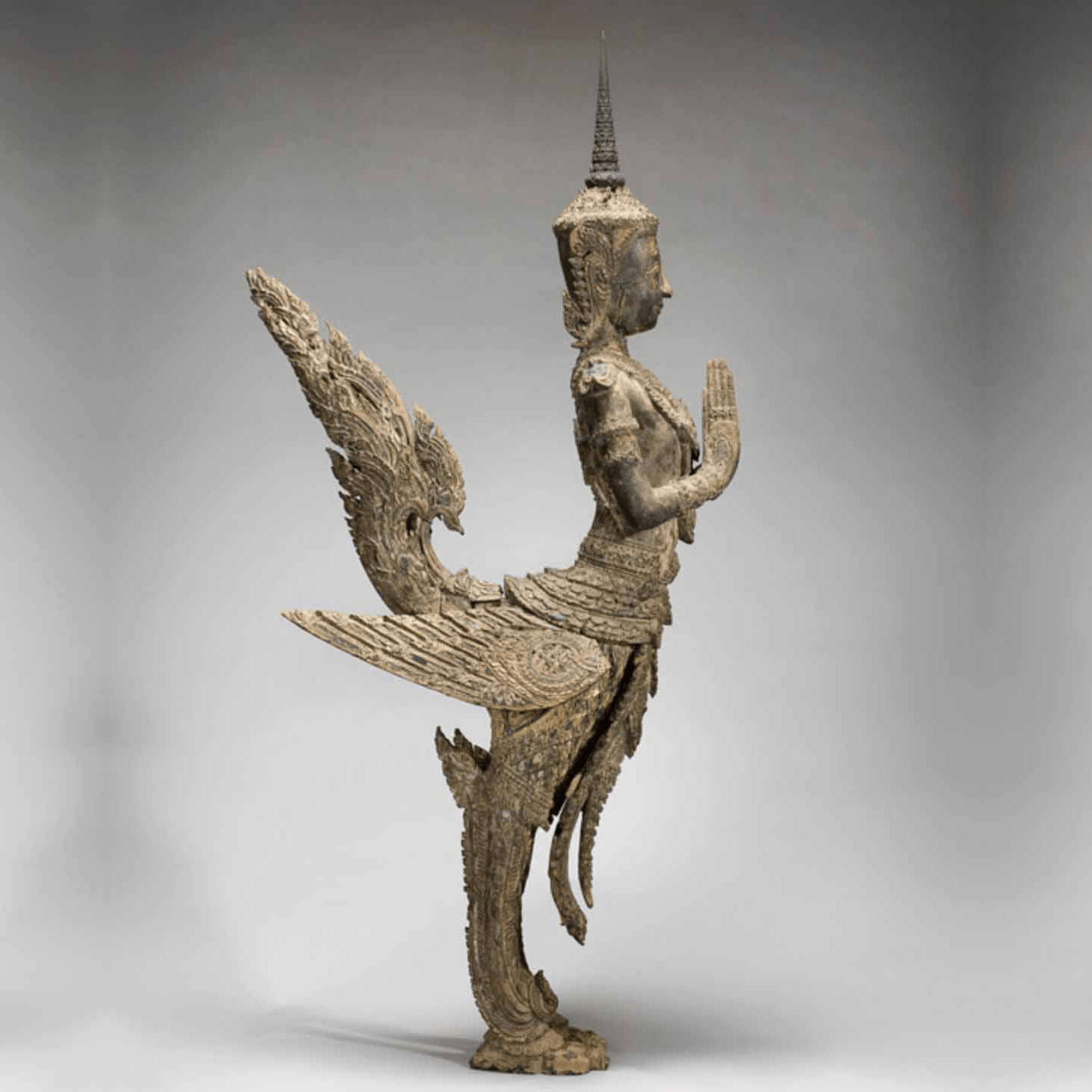Kinnara, Thai Mythical Bird-Man
In 2009, the Asian Art Museum of San Francisco organised Emerald Cities: Arts of Siam and Burma, 1775-1959.
The exhibition of decorative and religious objects explored the arts of Thailand and Burma’s and their shared aesthetic – despite their contrasting histories – and their shared culture of Theravada Buddhism. This object, a kinnara, or Thai mythical bird-man, from Buddhist mythology was included in the exhibition.
Drawn exclusively from the museum’s extensive holdings of artworks, many of the objects had never before been on view before. The majority of the works are from the Doris Duke Collection which the museum acquired in 2002. The more than 100 artworks include gilded and mirrored ritual vessels, black lacquer and mother-of-pearl inlaid furniture, sculpture and vibrant, colourful paintings.
This kinnara of a mythical Thai bird-man, is one of the wondrous creatures that inhabit the Eden-like Himavanta Forest of Buddhist legend. These half-bird creatures (kinnara and kinnari) are frequently depicted in Thai sculptures, paintings, and other mediums. Mythical Wooden figures of bird-men such as these were used in several sorts of royal ceremonies. One such statue is mentioned in the description of the coronation of Rama IV in 1851, where it is said to have contained a relic of the Buddha. Again, in 1865, the decorations of the platform for a royal ceremony were said to include a statue of a bird-man containing a relic of the Buddha. The custom of using such figures in royal ceremonies most likely went back centuries. Such statues have rarely survived, and only a handful are known. Several are in the National Museum, Bangkok.
In Asian Art Newspaper, May 2021 issue, this exhibition is featured in a full length article from our From the Archives series. The original article was published in Asian Art Newspaper, October 2009.

